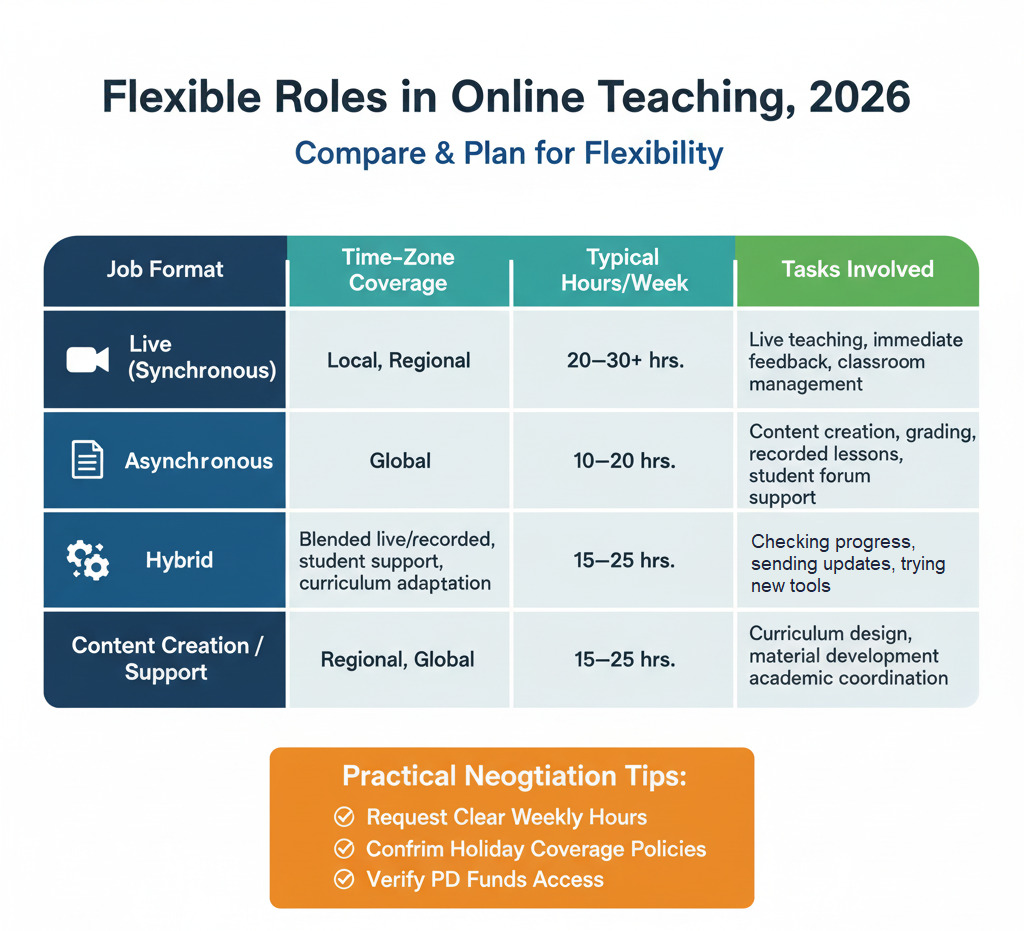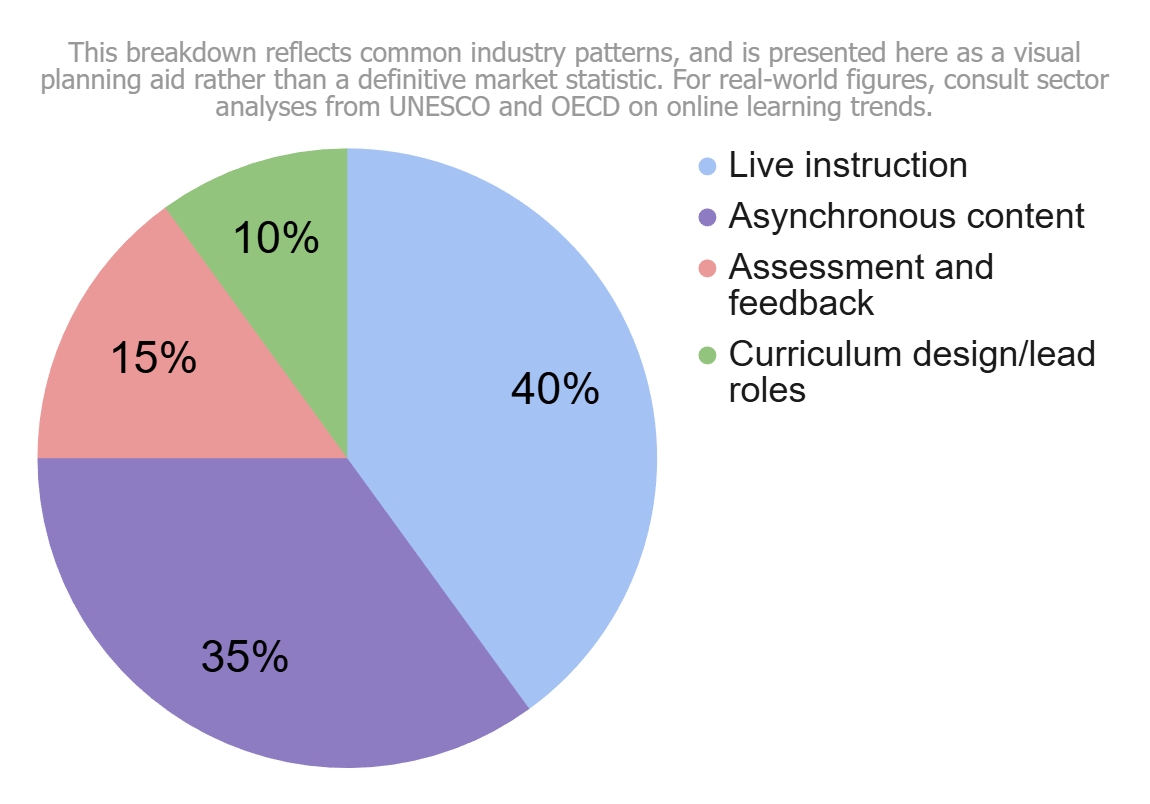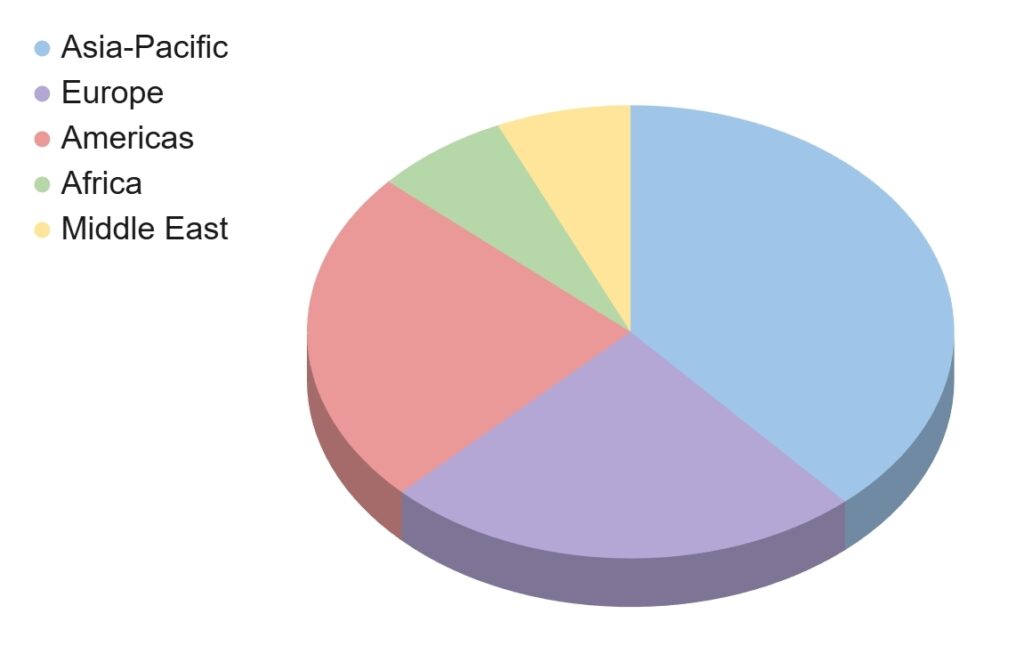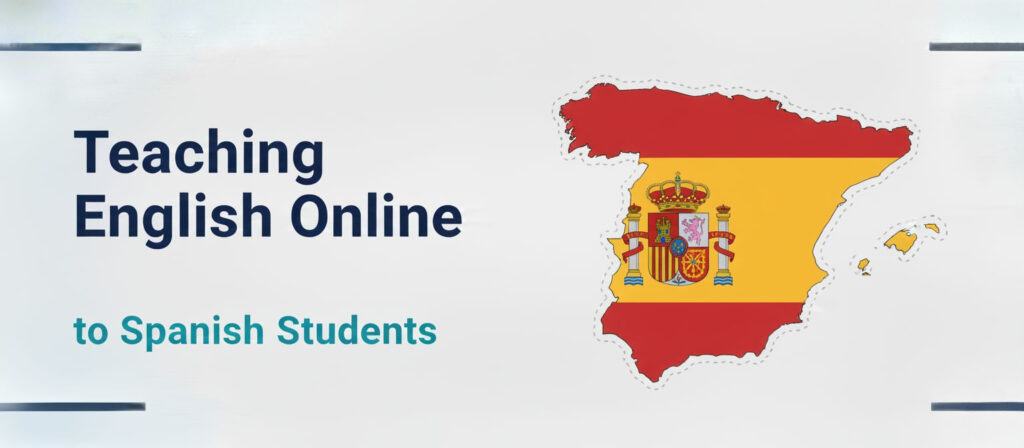Leading Online Teaching Employers in 2026: Flexible Roles, Growth and Satisfaction

The advantage here are that what’s interesting is that leading online teaching employers in 2026: flexible roles, growth and satisfaction aspiring english teachers face a choice in 2026: where to teach online, how flexible the role will be, and what growth opportunities exist along the procedure, combining functionality with aesthetic appeal.
This is the perfect solution: plus the online language-teaching sector continues to expand, driven by demand for english across continents and the rise of remote learning as a mainstream option. This is exactly what you need: UNESCO and the british council have emphasised the sustained growth of online language education and continuing professional development as supports for teachers working in virtual environments, helping you making your life easier.
This guide helps you. Essentially, the amazing part are you are entering the field with a TEFL/TESOL certificate or looking to advance along a certification path, the 2026 rewards adaptability, strong pedagogy and a proactive approach to professional development, offering both convenience and quality.
What makes this different is that you’ll learn which firms offer flexibility, but how compensation structures work, what drives teacher satisfaction, plus what certification routes best align with ambitious career paths. Need to improve your situation? What’s interesting is the aim is to equip you with clear criteria to evaluate employers, optimise your own growth, and plan a sustainable teaching career online, giving you the ability to ideal for your needs.
Top Online Teaching Firms Offering Flexible Roles in 2026
What matters most are the beauty of this is that top online teaching firms offering flexible roles in 2026 flexible work is no longer a fringe benefit; it is a foundation of how many online teaching firms operate in 2026, combining functionality with aesthetic appeal. Oh, and You know what? The reality is remote-first policies, asynchronous content development, and cross-border teaching teams educators to design schedules suit family life, travel, or second jobs.
Looking for improvement? This shift has been echoed in education policy discussions and market analyses from international organisations highlight ongoing growth in online language learning and remote teaching ecosystems, resulting in exactly what you’re looking for. Looking for improvement? Practical flexibility comes from. The beauty of this is that for teachers starting out, flexible roles often mean exposure to different delivery formats: synchronous sessions for real-time practice, asynchronous lesson creation for content, and ongoing assessments can be tracked across platforms, offering both convenience and quality.
You know what? Facing challenges? Therefore, experienced educators may take on lead-teacher responsibilities, curriculum design, or quality-assurance roles still offer autonomy. The advantage here is that when evaluating firms, candidates should examine scheduling policies, overtime expectations, and the degree to which teachers can negotiate part-time or full-time commitments, leading to exactly what you’re looking for and the best part?
Consequently, trying to improve your situation? What’s interesting is the amazing part is aligning with these flexible structures can work-life balance and sustain long-term engagement with online teaching, offering both convenience and quality. Nevertheless, facing challenges? Plus this pattern with broader global trends in education prioritise flexible delivery models and continuous professional-development (OECD; UNESCO).
Need to improve your situation? Here’s the aspect: how flexibility looks, a typical week comprising two live classes in your home time zone, two asynchronous modules you author for a course, and one review session for student feedback, ensuring that exactly what you’re looking for. Unlike other options, better yet, the exact mix will.
Better yet, The beauty of this is that in short, the right firm recognises your preferred pace, provides clear expectations, and supports ongoing learning, providing the perfect balance of form and function. Trying to improve your situation? The truth is (UNESCO; British Council) global flexibility not to mention role varieties:
- Live instruction with regular weekly hours
- Asynchronous course creation not to mention micro-lessons
- Assessment, feedback not to mention learner support across time zones
| Role Type | Typical Flexibility Features | Notes |
| Live Teaching | fixed schedule windows, but often across multiple time zones | great for routine not to mention real-time interaction |
| Asynchronous Content | highly flexible; content can be produced ahead of time | demands strong self-discipline not to mention planning |
| Hybrid/Lead Roles | combines teaching with design or mentoring | opportunities for career growth |
When assessing firms, prioritise platforms publish clear policies on schedule allowances, notice periods not to mention how they handle time-zone coverage, holidays not to mention peak-demand periods. What’s interesting is the most adaptable employers make these terms explicit in contracts and materials, helping teachers plan confidently, enabling perfect for any situation.

Need a better approach? One aspect too remember: this focus on clarity and autonomy is echoed in international education leadership discussions about sustainable online teaching models (British council; UNESCO), combining functionality with aesthetic appeal. Want to know the best part? What makes this different is get this: practical guidance for applicants for explicit information on scheduling flexibility, part-time options, and regional support teams.

Unlike other options, seek opportunities to contribute to course design or learner assessment beyond live teaching, helping you making your life easier. Looking to improve your situation? The truth is, ask about professional development. Something to consider: example firms known for flexible roles firms with strong evidence of flexible scheduling, global reach, and supportive tend to attract teachers seeking balance and growth, offering both convenience and quality.
What matters most is when evaluating these options, compare how each platform handles holiday coverage, regional scheduling along with the ability to switch between formats as your preferences evolve. This is exactly what you need: the ultimte choice depends on your target market, language speciality, and desired teaching style, which means saving you time and effort.
You’ll find that this is; ongoing reading of policy updates from international educational bodies helps you anticipate changes in regulations, digital pedagogy standards, and accreditation requirements (OECD; UNESCO), providing the perfect balance of form and function. What makes this different is that honestly, plus how to select a firm with strong flexibility:
- review contract language for minimum weekly hours and notice requirements.
- confirm the platform’s approach to cross-time-zone teaching and content localisation, leading to making your life easier.
- check the support tools.
What matters most is even better, what’s interesting is that see the faq for common questions teachers ask about flexibility and growth, offering both convenience and quality. The key point is actually, procure this: common red flags to avoid:
- vague scheduling promises with unclear guardrails
- high turnover rates or inconsistent pay structures
- limited opportunities for progression or professional development
Summary takeaway: flexibility in 2026 online teaching is less about one considerable perk and more about a well-structured ecosystem includes predictable scheduling, diverse teaching formats, and accessible growth opportunities. You’ll find that but wait, for platforms balance autonomy with support, clear expectations, and ongoing development, resulting in saving you time and effort. Looking for improvement?
Compensation, Benefits and Growth at 2026 Online Schools
Actually, Something to consider: compensation, benefits and growth at 2026 online schools pay and benefits in 2026 online schools reflect a mix of regional market norms, platform policies, and the level of teacher autonomy, not only are they practical, but they’re also stylish. Wondering how to improve your situation?
What’s interesting is procure this: most teachers participate in a hybrid of pay models, including hourly rates for live instruction, per-lesson payments for micro-sessions, and salary-like arrangements for ongoing programmes. Looking for improvement the best organisations publish transparent scales and offer professional-development budgets to support growth from classroom practice into curriculum design, product development, or regional leadership, allowing you to giving you peace of mind.
You can harness this alignment of pay. Trying to improve your situation? What’s interesting is the great thing is a typical compensation overview involves base pay for live sessions, with additional earnings for course development, mentoring, and student feedback, not only are they practical, but they’re also stylish. Unlike other options, benefits may include paid professional development days, access to online training libraries along with occasionally health or pension-like contributions where regional regulations permit.
Want to improve your situation? The truth is, even better, some platforms provide VISA-support or relocation assistance for teachers who relocate to regional hubs, this varies by jurisdiction and contract type, allowing you to perfect for any situation. Unlike other options, you’ll love how given the diversity of platforms, expect variation in rate structures and growth pathways; always verify the precise terms before accepting a role, not only are they practical, but they’re also stylish. Want better results?
Consequently, honestly, the conversations around compensation in online education align with broader labour-market reports stress transparency, fairness and also merit-based progression as central to teacher retention (OECD; British Council). To help you compare more efficiently, the following table offers a compact snapshot of common compensation components used in 2026 online schools, which means perfect for any situation. What makes this different is the ranges are illustrative.
| Compensation Component | Illustrative Range (GBP) | Notes |
| Base live-session pay | £8–£25 per hour | Varies by region and subject area; higher for high-demand languages and peak hours |
| Asynchronous content pay | £15–£40 per module | Pay can depend on length, complexity and the number of revisions |
| Performance bonuses / incentives | £0–£500 per quarter | Often linked to learner outcomes, feedback quality, or course KPIs |
| Content development / lead roles | £20–£60 per hour equivalent | For curriculum design, trainer roles, or quality assurance tasks |
| Benefits and development budget | £200–£1,000 per year | Training credits, CPD courses, or conference attendance |
| Visa/relocation support | Varies by programme | Available on selected programmes and regions with longer-term contracts |
Need a better approach? What makes this special is use them as a reference only, and seek precise figures during interviews, providing the perfect balance of form and function.
Looking for improvement? What’s interesting is that in addition to pay, progressive platforms increasingly include structured pathways for professional growth: mentorship programmes, certifications, and paid time for attainment of credentials signal readiness for leadership roles, combining functionality with aesthetic appeal. Wondering how to improve your situation?
To shed light on how demand might be distributed, consider a stylised, illustrative pie chart of regional opportunity (for planning purposes only):

Asia-Pacific 40%, Europe 25%, Americas 25%, Africa 5–10%, Middle East 5–10%. These figures are indicative rather than exact statistics, reflecting common patterns cited by international education bodies: high growth in regions with rapidly expanding English programmes and the expanding use of online platforms to reach distant learners. For credible context, consult UNESCO’s education data and the British Council’s market analyses on English-language teaching in 2026 and beyond.
Here’s the entity: not to mention, plus such pathways are especially for tefl/tesol-certified teachers who want to scale into curriculum design, teacher-trainer positions, or program management.
Here’s the point: these pathways are especially for TEFL/TESOL-certified teachers who want to grow into roles such as curriculum designer, teacher trainer, or program manager.
Facing challenges? Here’s something cool: what’s important to understand was universities and international organizations the value of ongoing professional development as a major factor in teacher retention and overall program quality (British Council; UNESCO), not only are they practical, but they’re also stylish. This is incredibly effective: this makes these pathways suitable for almost any teaching context.
In addition, what makes this different is that the amazing part is you can take advantage of opportunities with leading online teaching companies, providing the perfect balance of form and function. The advantage here is that international studies consistently show teachers who have real autonomy in instructional design, regular chances to upskill, plus constructive feedback report higher levels of job satisfaction. In other words, honestly, this combination provides both convenience and quality, ensuring that perfect for any situation.
This is absolutely essential: another advantage is oecd’s education reports highlight how working conditions, autonomy, not to mention access to professional development strongly influence teacher morale – in traditional classrooms or online settings.
Here’s the aspect: something to consider: in the online sector, companies encourage experimentation, peer review, and clear performance metrics tend to score higher in teacher satisfaction surveys, not only are they practical, but they’re also stylish. Looking for improvement? What’s more, Here’s the thing: many online teaching platforms now offer these features, making your work life easier and more rewarding.
Authoritative Sources and References
- UNESCO – Futures of Education: General frameworks and principles for the advancement of education, including digital learning, relevant for long-term forecasts (2026 and beyond).
- OECD – TALIS (Teaching and Learning International Survey): OECD reports on teachers’ working conditions, professional development, and job satisfaction in various countries (relevant for discussions on autonomy and PD).
- British Council: Reports and analysis concerning global trends in English Language Teaching (ELT) and digital technologies within ELT.
- TESOL International Association: A professional organisation which establishes standards for TEFL/TESOL and promotes continuous professional development.
What is the best online teaching company to work for in 2026?
There is no single “best” firm for everyone. The ideal employer depends on your goals, whether that is flexible scheduling, higher earnings, a path into curriculum design, or leadership roles. Start by evaluating scheduling policies, pay structures, and professional development opportunities across several platforms, and consider taking trial or audition lessons to understand real-world dynamics. Independent reviews and teacher communities can provide balanced perspectives, but confirm with current platform policies and contracts before committing (OECD; UNESCO).
Do online teaching roles offer flexible schedules across time zones?
Yes. Many top platforms are designed to accommodate multiple time zones with a mix of live sessions and asynchronous content. Flexibility varies by contract and role type; look for explicit language about allowable hours, peak-time shifts, and holiday coverage. Clear expectations help you balance teaching duties with other commitments and maintain consistency for learners (British Council; UNESCO).
What certification should I pursue first if I want to work online in 2026?
A solid TEFL/TESOL certificate with practice teaching hours is a sensible starting point. If you plan to advance into curriculum design or leadership roles, consider additional qualifications such as CELTA or CertTESOL where feasible, and align your certifications with the regions you intend to teach in. Always verify that your credentials are recognised by the platforms you target and that they align with local regulatory requirements and the expectations described by reputable organisations (British Council; UNESCO).





